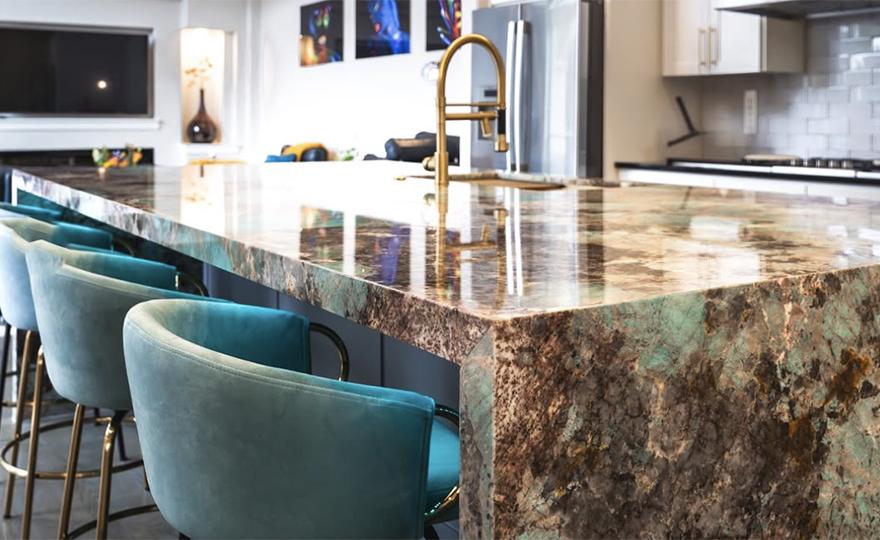
Granite is one of the most practical and enduring choices for kitchens — countertops, backsplashes, islands and more — thanks to its unique combination of natural strength, timeless beauty and everyday functionality. It’s also exceptionally durable; granite resists stains, scratches, chips, and dents, standing up to the demands of daily use with ease. Let the natural stone specialists in our Richardson, Texas showroom help you find the perfect match for your project.
Formed deep within the Earth’s crust over millions of years, granite is composed primarily of quartz, feldspar and mica. These minerals give the stone its distinctive pattern and wide range of colors — from classic blacks and whites to blues, pinks and greens.
In addition to kitchen countertops, granite is a great choice for all high-traffic areas: flooring, fireplace surrounds, bathroom vanities, and outdoor surfaces like patios and grill stations.
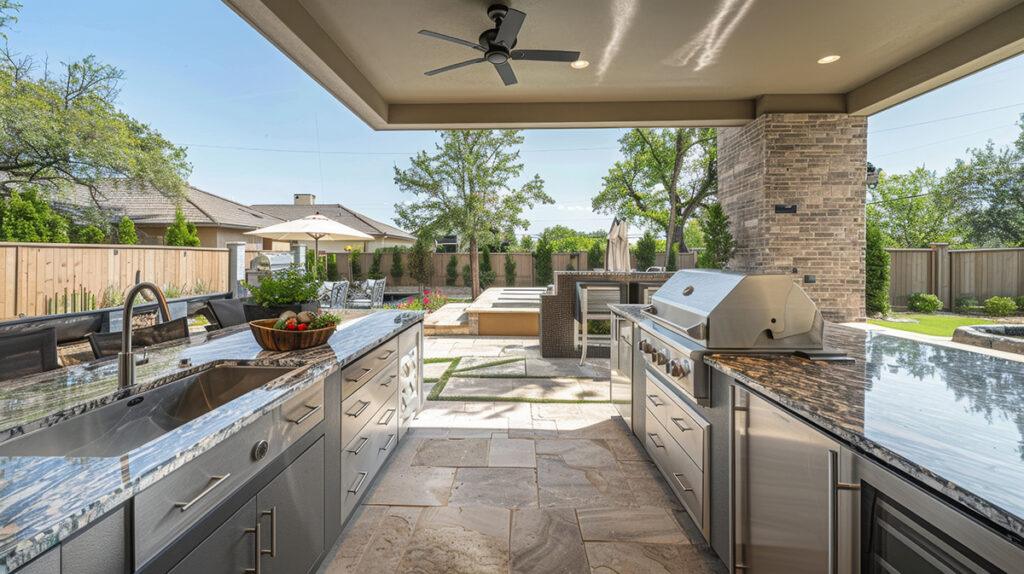
Known for its exceptional hardness (ranking 6 to 7 on the Mohs scale) granite is highly resistant to scratches, chips and general wear. Slabs typically come in two thickness options: 2 centimeters (¾ inch) and 3 centimeters (1¼ inch).
Quarried around the world — with major sources including Brazil, Italy, India, and parts of Africa — granite is a type of igneous rock, formed from molten stone that cooled and hardened beneath the Earth’s surface. This natural formation process gives granite its signature pattern and strength. It is available in a range of finishes: polished for a glossy, mirror-like surface; honed for a smooth, matte appearance; and leathered for a textured, more organic look.
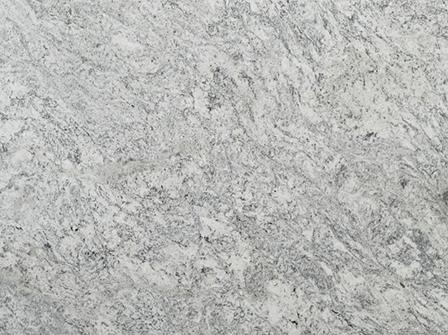
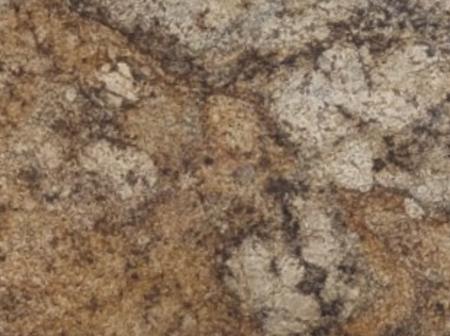
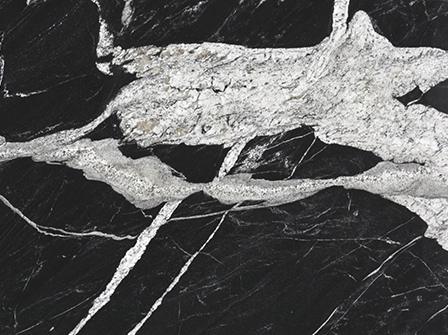
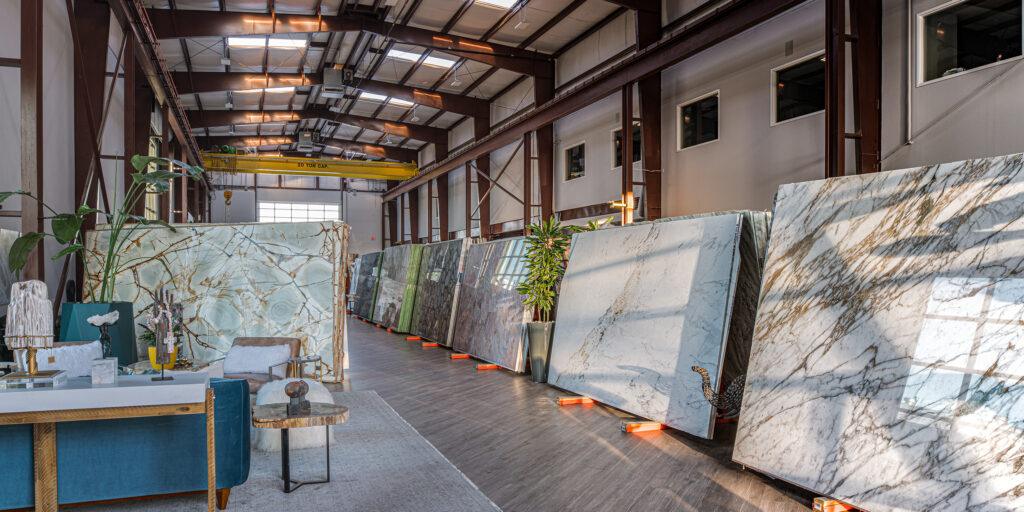
Our Richardson showroom is where durability meets design. Browse our expertly edited assortment of granite slabs that are as tough as they are timeless.
Heavily used areas including:
Exceptional Durability
Highly resistant to scratches, chips and cracks — even under heavy daily use.
Heat Resistant
Can withstand high temperatures without damage.
Stain Resistant
Once properly sealed, resists common stains like oil, coffee and wine.
Low Maintenance
Granite requires minimal upkeep — regular cleaning and periodic sealing will keeps it looking beautiful for years.
Uniqueness
Created by nature, so no two slabs are alike.
Versatility
Suitable for a wide range of applications.
Clean regularly
Clean daily with a mild, pH-neutral soap or a specially formulated stone cleaner and warm water.
Seal for protection
Essential to protect surfaces from stains and moisture.
Prevent heat damage
While granite is heat resistant, sudden extreme temperature changes can cause cracks. Use trivets or hot pads for cookware that has been on high heat for prolonged periods.
Prevent scratches and chips
Use cutting boards when preparing food to prevent scratches and protect your knives.
Wipe spills promptly
Prevents potential etching or staining — even on sealed granite.
Avoid:
Harsh chemicals, bleach, ammonia and acidic cleaners.
Granite is one of the most popular choices for countertops, and it’s no mystery why. Known for its natural beauty and high-end appearance, granite also stands out when it comes to durability. Granite’s strength, resistance to scratches and heat, and relatively low maintenance requirements make it one of the most durable countertop materials on the market.
When it comes to maintaining granite countertops, one of the most commonly asked questions is whether sealing is necessary. Granite is known for its durability, beauty, and natural resistance to wear and tear, but it’s not completely impervious to stains or damage. That’s why sealing is important. Applying a sealant creates a protective barrier that helps repel liquids, making the surface easier to maintain and keeping it looking pristine for years.
One of the most appealing features of granite countertops is their natural heat resistance. As a dense, hard material formed under immense heat and pressure deep in the earth, granite can withstand high temperatures without cracking or burning. This means that, in most cases, you can place hot pans directly on granite without causing any noticeable damage.
However, while granite’s heat tolerance is impressive, it’s still a good idea to exercise caution.
Cleaning granite countertops is straightforward, but it’s important to use the right techniques and products to preserve their beauty and longevity. With proper care, you can keep your granite surfaces looking pristine for years to come. A few tips include: Use a gentle cleaner, clean spills promptly, avoid abrasive scrubbing pads, dry after cleaning, and reapply sealant as needed.
Granite is a highly durable and relatively stain-resistant material, especially when properly sealed. However, it’s not entirely impervious to staining. While granite’s natural density makes it less porous than many other natural stones, liquids like oil, wine, or coffee can sometimes seep into the stone’s surface if left standing for too long. This is particularly true for lighter-colored granite, which can be more prone to visible stains. While granite is not 100% stain-proof, cleaning quickly, proper sealing, and regular maintenance make it highly resistant to stains.
"*" indicates required fields
